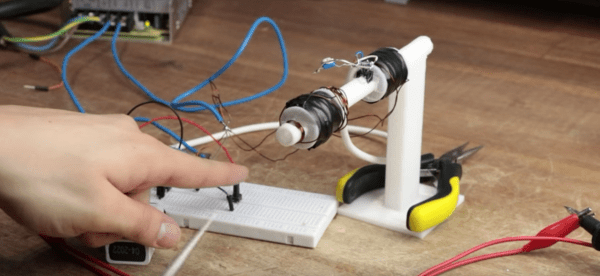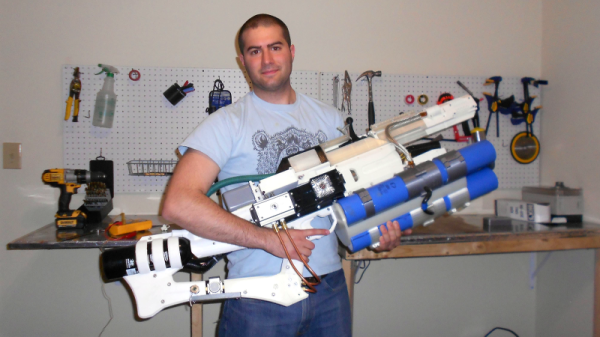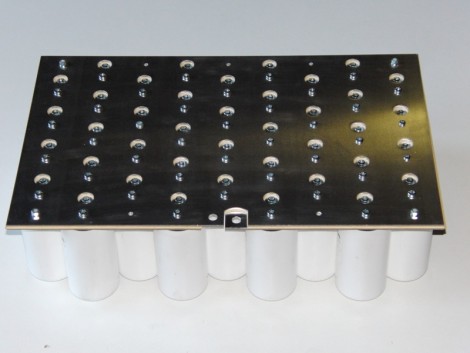It’s huge, it’s unwieldy, and it takes 45 seconds to shoot all three rounds in its magazine. But it’s a legitimate semi-automatic railgun, and it’s pretty awesome.
Yes, it has its limits, but every new technology does, especially totally home-brew builds like this. The aptly named [NSA_listbot] has been putting a lot of work into his railgun, and this is but the most recent product of an iterative design cycle.
The principle is similar to other railguns we’ve featured before, which accelerate projectiles using rapidly pulsed electromagnets. The features list in the video below reads like a spec for a top-secret military project: field-augmented circular bore, 4.5kJ capacitor bank, and a custom Arduino Nano that’s hardened against the huge electromagnetic pulse (EMP) generated by the coils. But the interesting bits are in the mechanical design, which had to depart from standard firearms designs to handle the caseless 6 mm projectiles. The resulting receiver and magazines are entirely 3D printed. Although it packs a wallop, its cyclic rate of fire is painfully slow. We expect that’ll improve as battery and capacitor technology catches up, though.
Want to check out some more railgun builds? We’ve got them in spades — from one with $50,000 worth of caps to a wrist-mounted web-slinger.
Continue reading “Semi-Automatic Rail Gun Is A Laptop Killer”




 Until then, we’ll have to settle with
Until then, we’ll have to settle with 













